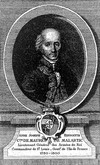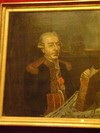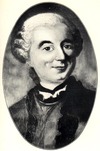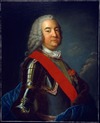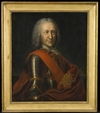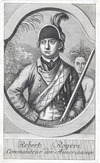Montcalm*’s forces at Fort Carillon (Ticonderoga, N.Y.) in 1758, and again while commanding an independent company of New York provincial troops at the siege of Fort Niagara (near Youngstown, N.Y.) in
Montcalm*, who consistently preferred his regulars and who detested Marin’s relative, Governor Vaudreuil, was nevertheless forced to give Marin credit for some victories, although he described him as
the Indians who accompanied Montcalm*’s expedition against Fort George (also called Fort William Henry, now Lake George, N.Y.). After
movements and the events in which he participated. The following summer Malartic took part in Montcalm*’s expedition against Oswego
Montcalm* during the siege of Fort William Henry (also known as Fort George, now Lake George, N.Y.) that summer, he was instrumental in capturing a British flotilla. In September 1757 Governor
Montcalm*. McCarty may have been a commissary with the Connecticut militia in William Haviland’s advance
Montcalm* in the capture of Fort William Henry (also called Fort George, now Lake George, N.Y.). When the warriors returned to L’Arbre Croche they carried with them not only the spoils of war but the
night. A marginal note in Montcalm*’s journal admonished that d’Olabaratz was “a man no longer to be employed in any command
garrisons, but it was in poor condition; Montcalm* referred to it as “good for nothing” and its complement of about 60 soldiers as a
with Montcalm*, the new commander formed a favourable impression of him. Pellegrin’s services were not in great demand, however
]. Then in August 1757 Picoté de Belestre took part in Montcalm*’s victorious offensive against Fort George (also called Fort
). Montcalm* observed that “according to Abbé Picquet, the Indians say that the English have put a price on his head.” Lalande continues: “Generals, commanding officers, troops showed their esteem and
the country for many years and whom Montcalm*, commanding the regular forces in Canada, regarded as one of the colony’s leading
Dieskau* and later Montcalm* in the Lake Champlain region. During the winter of 1757–58 he was in Quebec, where he associated with
Montcalm*’s latest victory, at Fort Carillon (Ticonderoga, N.Y.), to the minister. But certain people distrusted Péan; in fact, the financial commissary of wars, André
Montcalm*’s defeat, Ramezay returned to town and resumed command of his troops. He asked Pierre-André Gohin
RENAUD D’AVÈNE DES MÉLOIZES, ANGÉLIQUE (baptized Angélique-Geneviève) (Péan) – Volume IV (1771-1800)
Montcalm*, who in Guy Frégault*’s opinion, also belonged “to the grand
following year by Montcalm*’s forces, securing control of the Great Lakes. In 1757 Fort George (Fort William Henry; now Lake George, N.Y
. During the summer he commanded the advance guard of the forces under Montcalm*, who on 11 August invested the forts in the region
(New Haven, Conn., and London, 1931; repr. Freeport, N.Y., 1966), 96–123; Francis Parkman, Montcalm and Wolfe (2v., Boston, 1884; repr. New York, 1962); J. R. Cuneo, “The early days of the


